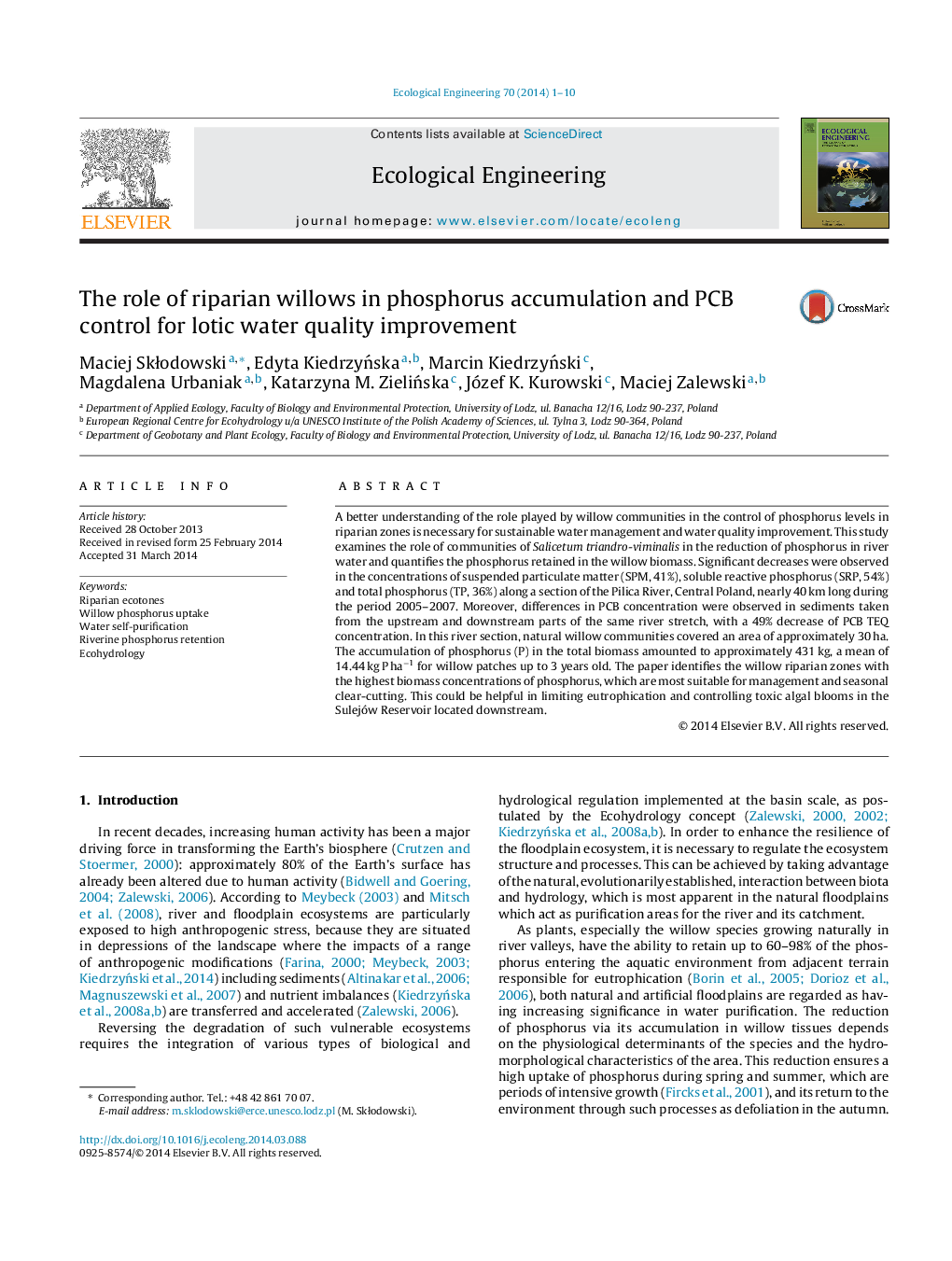| Article ID | Journal | Published Year | Pages | File Type |
|---|---|---|---|---|
| 6302095 | Ecological Engineering | 2014 | 10 Pages |
Abstract
A better understanding of the role played by willow communities in the control of phosphorus levels in riparian zones is necessary for sustainable water management and water quality improvement. This study examines the role of communities of Salicetum triandro-viminalis in the reduction of phosphorus in river water and quantifies the phosphorus retained in the willow biomass. Significant decreases were observed in the concentrations of suspended particulate matter (SPM, 41%), soluble reactive phosphorus (SRP, 54%) and total phosphorus (TP, 36%) along a section of the Pilica River, Central Poland, nearly 40 km long during the period 2005-2007. Moreover, differences in PCB concentration were observed in sediments taken from the upstream and downstream parts of the same river stretch, with a 49% decrease of PCB TEQ concentration. In this river section, natural willow communities covered an area of approximately 30 ha. The accumulation of phosphorus (P) in the total biomass amounted to approximately 431 kg, a mean of 14.44 kg P haâ1 for willow patches up to 3 years old. The paper identifies the willow riparian zones with the highest biomass concentrations of phosphorus, which are most suitable for management and seasonal clear-cutting. This could be helpful in limiting eutrophication and controlling toxic algal blooms in the Sulejów Reservoir located downstream.
Keywords
Related Topics
Life Sciences
Agricultural and Biological Sciences
Ecology, Evolution, Behavior and Systematics
Authors
Maciej SkÅodowski, Edyta KiedrzyÅska, Marcin KiedrzyÅski, Magdalena Urbaniak, Katarzyna M. ZieliÅska, Józef K. Kurowski, Maciej Zalewski,
